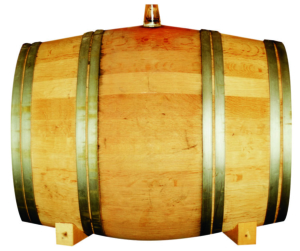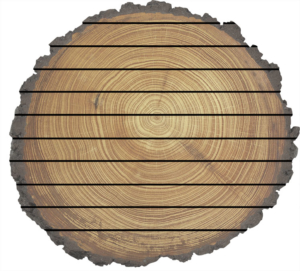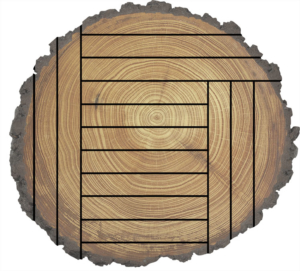Northern European White Oak grows north of the Alps mostly in France, Germany and Austria. During the last ice age, the number of varieties of oaks and maples in Europe were greatly reduced as they could not migrate over the Alps into warmer climates due to the east – west orientation of the mountain range. Only a few subspecies survived under the ice shield. In consequence, there is much less tree and specie variety to cross pollinate in northern Europe.
In contrast, there are more than 100 subspecies of Oak in North America where all the mountain ranges are north – south oriented and all sub-species survived the ice age and can cross pollinate.
As a result, French Oak has less color variation and higher tannin content than any other oak around the globe. French Oak is grown in forests that have been a model for sustainable hardwood management for the last 300 years. The trees are only harvested when they are fully mature after 150+ years. The harvesting is done by select, unobtrusive cutting.
Applications

Live Sawn
For flooring, the logs are generally “live sawn” in a horizontal manner only. After cutting, the boards are stickered and naturally air dried for 12-24 months. Before production into wide planks for flooring, the planks are slowly kiln dried for 30 days for added stability and to bring the moisture content to indoor levels. At this production time, we also use the high tannin content of the French Oak to accelerate the aging process to give different natural colors to the flooring plank without using any artificial coloring or stain.
Grade Sawn
Instead of cutting for highest yield of grade lumber, the “live-sawn” cutting method results in a variety of beautiful grain patterns within each individual board. Tight straight quarter grain, medullar flecks along the edges, and cathedral grain are all part of the same plank. Live sawn planks will also show all the various idiosyncrasies of the log, including knots, pith or mineral deposits.
The best of real wood flooring
French oak is the oldest most versatile flooring material. Each board is unique with its own character and always remains timeless. It has been used for centuries in castles, monasteries, chalets, villas as well as contemporary modern living. It shows off the best of real wood flooring. Over the years, French Oak matures from rich amber to a natural deep golden brown tone that never goes out of style.



